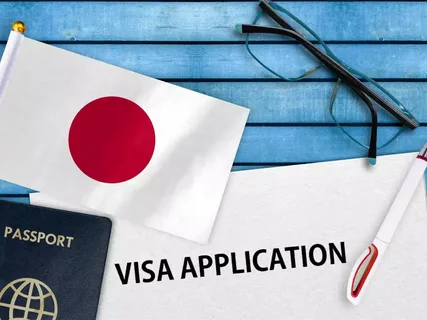Japan is preparing to make significant adjustments to its travel-related fees, including higher departure taxes, updated visa charges, and a brand-new electronic travel authorisation system. These updates, according to government officials, are long overdue and necessary to bring Japan’s rates in line with international standards while improving public and border services.
The move, expected to unfold gradually over the next few years, will affect nearly every international traveller, from tourists to business visitors, marking the first major overhaul of Japan’s travel fee structure in decades.

Japan’s motivation isn’t simply to collect more money. Officials describe the upcoming hikes as part of a broader effort to strengthen the country’s public infrastructure, particularly airports, border screening, and digital travel systems, as visitor numbers rebound and global mobility grows.
The new structure will also create additional funding for public projects, including education. In particular, a portion of the increased revenue may help sustain Japan’s new free high school tuition program, which has placed additional strain on government finances.
In short, Japan wants to ensure that its tourism system remains world-class, efficient, and sustainable without overburdening domestic taxpayers.
Since 2019, Japan has charged all departing passengers, both locals and foreigners, a “Departure Tax” of 1,000 yen (roughly $6.50). But starting in fiscal 2026, that figure will rise, though the exact new rate has not yet been announced.
The increase will bring Japan closer to what many other countries charge. For example, the United States imposes around $22 (about 3,300 yen) in departure-related fees, and several European destinations have similar or higher charges embedded in ticket prices.
Officials have emphasised that the additional revenue will go toward improving travel efficiency, reducing airport congestion, enhancing immigration processes, and upgrading screening systems to handle modern travel demands.
And to ensure the changes don’t feel punitive for locals, the government is reportedly considering lowering passport renewal fees for Japanese citizens around the same time the new departure tax takes effect.
Visa Fees Under Review After More Than Four Decades
Japan’s visa fees are among the lowest in the developed world, something that has remained unchanged since 1978. Currently, a single-entry visa costs about 3,000 yen (roughly $19). In comparison, the United States charges about $185 for the same, and the European Union’s standard visa fee stands at €90.
That’s about to change. Officials from both the Ministry of Foreign Affairs and the Ministry of Justice are working on revised visa rates expected to better reflect modern administrative costs and global standards.
For Japan, this adjustment is less about deterring visitors and more about funding the systems that manage millions of entries annually. After years of underpricing and rising operational costs, an update is seen as both necessary and inevitable.
Introducing JESTA
One of the most notable updates in Japan’s travel reform plan is the introduction of JESTA — the Japan Electronic System for Travel Authorisation.
Set to launch in fiscal 2028, JESTA will apply to visitors from 71 visa-exempt countries. Much like the United States’ ESTA or Canada’s ETA system, JESTA will require travellers to register online before arriving in Japan.
Each applicant will complete a brief pre-screening form and pay an estimated fee of about 6,000 yen. Once approved, the authorisation will likely be valid for multiple short-term entries over a set period, similar to other global systems.
This new system represents Japan’s move toward digital-first border management — improving security, efficiency, and data tracking, while making travel more predictable for visitors.
Why Japan Is Making These Changes Now
The country’s tourism sector has seen a powerful resurgence since reopening after the pandemic. With record numbers of international visitors returning, and major global events on the horizon, the country’s infrastructure is under more pressure than ever before.
By revising its travel-related fees, Japan aims to:
- Modernise outdated systems: Many of the current rates were set decades ago, long before digital processing, e-gates, or advanced security measures became standard.
- Enhance travel experience: The revenue will help ease airport congestion, shorten processing times, and upgrade screening technologies.
- Support social programs: Some of the funds may be redirected to domestic initiatives like education, helping Japan balance fiscal sustainability with social welfare.
- Align with international norms: Japan wants to bring its travel fee structure closer to global benchmarks without compromising its appeal as a top-tier destination.
Impact on Travellers
While the changes will mean slightly higher costs for travellers, the overall impact is expected to be minimal in the grand scheme of international travel budgets.
Here’s what to expect in the coming years:
- Slightly more expensive flights: The revised departure tax will likely be included in ticket prices, much like other international surcharges.
- Higher visa application fees: Depending on your nationality, you may see an increase when applying for Japanese visas.
- Mandatory digital pre-registration: If you’re from a visa-exempt country, you’ll soon need to register via JESTA before travelling.
The trade-off? More efficient arrivals, better airport experiences, and smoother processing thanks to Japan’s investment in infrastructure and technology.
Balancing Growth and Accessibility
Japan’s approach reflects a growing global trend balancing tourism growth with sustainability and national priorities. Countries around the world are reassessing how they fund tourism infrastructure, with many opting for digital systems and updated fees to handle increasing visitor numbers.
The decision is also about future-proofing its systems. By 2028, international travel is expected to be even more digitised, data-driven, and interconnected. JESTA and the related fee adjustments position Japan to compete on efficiency while maintaining strong border security and public service funding.
What Travellers Should Do Now
If you’re planning a trip to Japan in the next few years, here’s what you can do:
- Stay informed: Monitor updates from Japan’s Ministry of Foreign Affairs regarding visa fee adjustments and JESTA rollout timelines.
- Apply early: If you need a visa, submit your application well in advance, especially as new pricing and requirements take effect.
- Budget for changes: Future trips to Japan may cost a little more, but the improved travel systems and services will likely justify the difference.
Japan’s upcoming travel fee changes mark a new chapter in how the country manages tourism and border control. It’s a shift toward modernisation, one designed to strengthen public services, digitalise entry systems, and keep Japan among the world’s most efficient and welcoming destinations.
While travellers may soon pay slightly more, the long-term benefits, smoother journeys, better infrastructure, and improved national services could make the experience of visiting Japan even more rewarding.


